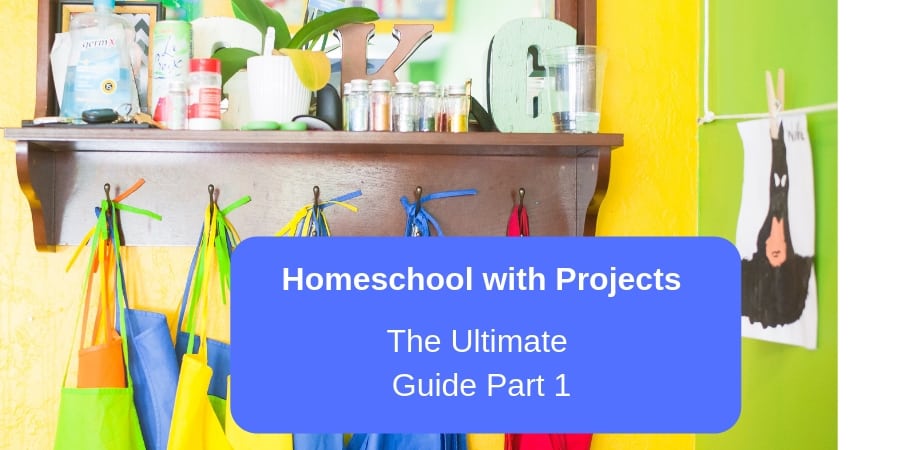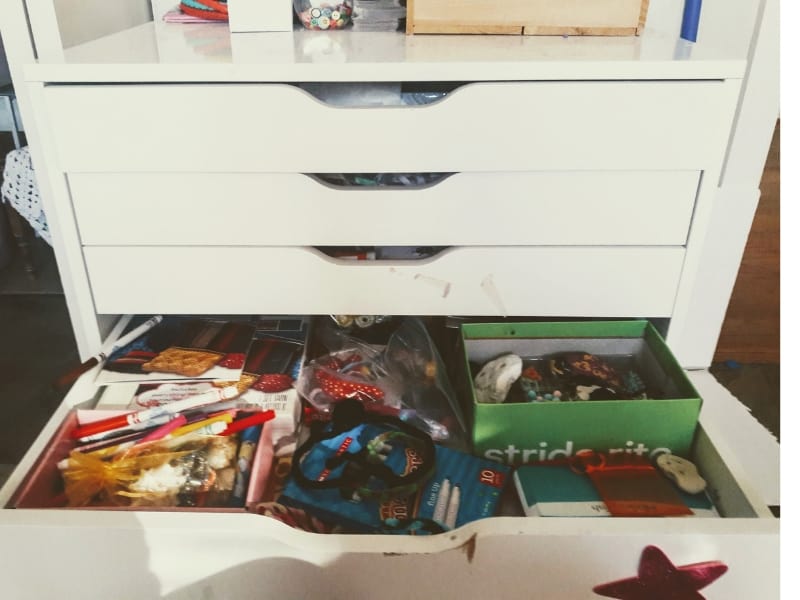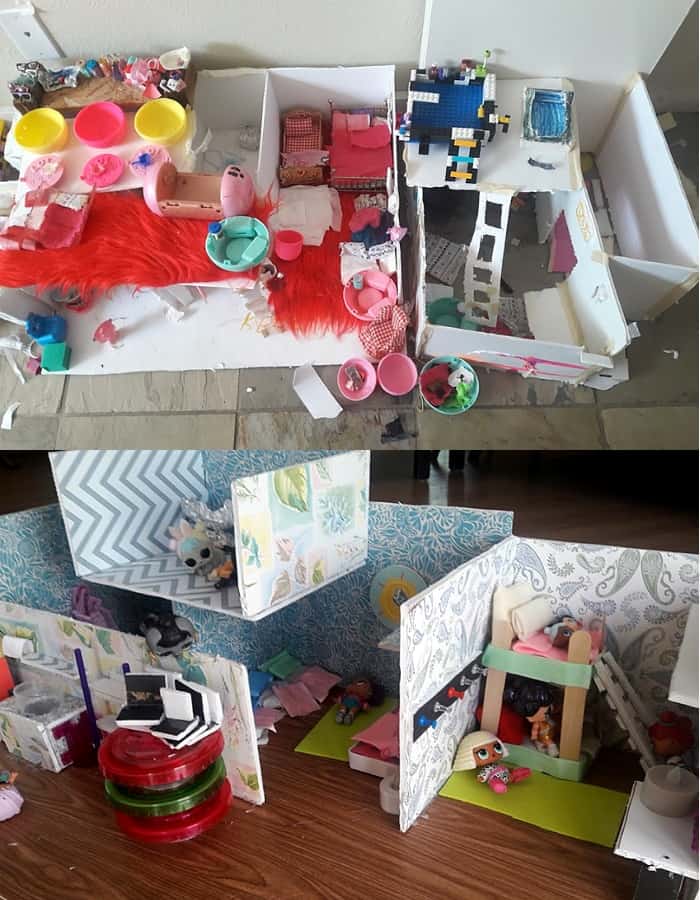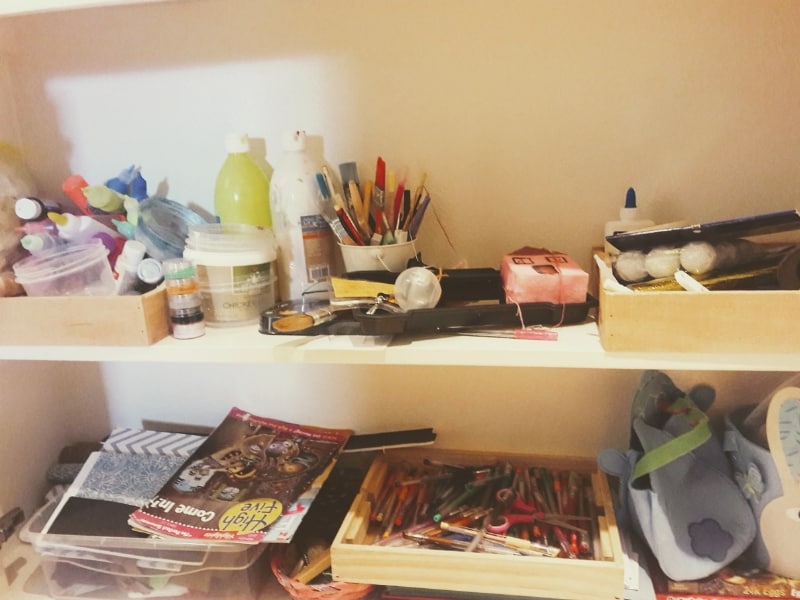Age appropriate learning is project-based learning

Project-based learning is age appropriate. In fact, this is the one kind of learning that starts off when kids are preschool age and grows with them, all the way to adulthood.
Preschools like Reggio Emília and so many other preschool teachers implement a lot of project based activities.
But as kids grow up and go into the grades, hands-on activities get substituted by focusing on reading, math worksheets and memorization. Few schools if any, nowadays weave in projects into the classroom. It’s difficult. It is so much easier to follow the model we’ve had since the industrial revolution. The only school I know that focuses on project-based learning is Acton Academy. And, that’s a private school.
When people say that their kids need to be prepared for the workplace, I’m not sure exactly what they think it’s going on “in the workplace”. Every single company weather it is civil engineering or software engineering, whether it is a video game company or a pharmaceutical company, a tiny startup or a Fortune 500 company, they all have Projects going on all the time. All the production revolves around Projects.
It is very likely depending on the kid’s education that when they get a job after college, they will be working on a project. He or she may be part of a crossfunctional team.
As such, he or she, will need: To understand how to work with other teams, and other stakeholders, to take and give constructive criticism, to not take updates to their work personally, to be nice and agreeable to work with, to understand the milestones to reach and the tasks that need to be completed to drive the project to completion. Have some leadership skills and communicate professionally.
See our post 10 Tips to get children on leadership path with Mindful Homeschooling
These are skills that can be introduced from a very young age and will need to be developed more in depth as kids grow. Understanding the life of the project can start also at a very early age. And when kids play or work on something together and communicate in a calm and constructive way to express agreement or disagreement, they are learning how to communicate in a professional manner.
Homeschool lends itself very well to project-based learning, as you can keep all the materials, supplies, and tools your child will need to make anything that comes to mind. Also, you can keep track of what he’s learning and what skills need improvement. You can also identify opportunities for other skills like addition, division, multiplication, measuring, fractions, writing, scheduling, etc.
Projects can be structured and unsctructured, just like play.
The first exposure kids get from project-based learning should be with materials, supplies, tools. Anything that is sensory and tangible.
Learning through materials
I want to emphasize that project-based learning is not exclusive to young kids. All kids, regardless of age can continue to learn through projects, get better, and develop leadership skills all through their childhood and into adulthood. But while kids are still shaping what they like, getting to know what they are good at, the best project-based learning is those projects that require the use of materials because:
1. Projects that require working with materials give every other part of the project something you can see and touch to which to form all other decisions.
2. Using materials allows kids to experiment with the world around them, make decisions based on how the materials “behave”, they can gauge their skill and progress.
For example, creating a simple computer program that makes LED lights flash in a certain order is a project an 8 year old can undertake. However, here is the problem with that kind of project:
The 8 year old will have to be handheld through the entire process and has absolutely no use for it, so it is unlikely that he’ll want to program something on his own when he’s 8 years old. Whereas perhaps it would be a much more exciting project to install stairs on a tree. Even though this would be a lot more challenging and would require the same amount of help from the adult, he will come out with the know-how to take on something like that when he’s 10. And also, when he’s 10, he might be likely to want to play around with programming since the brain is more developed for abstract and analytical thinking AND he figures if he can install stairs on his tree he can build a simple program.
Once they have learned through working with materials, they can apply the learning to anything else. They will understand that there is a learning curve and they will understand and be very acquainted with the learning curve.
Such materials are as simple as: glue,nails, tools. foam board, tape, hot glue. plastic tubing, rope, wood, playdough, colors, pigments, hardening playdough, thin plywood, cardboard boxes, hot glue, duck tape, water pump, etc.
Liquids, foods, fabric, fibers, metals, leather, yarn.
 Creating a homeschool project-based learning environment
Creating a homeschool project-based learning environment
If you are still reading, you are probably somewhat serious about implementing Project-based learning into your homeschool. For your child to be a project-based learner you may need a framework for it: space, time, materials, organization and an attitude towards making things vs buying things.
What I like to do is to have different areas of the house where we keep materials and where we might engage in different projects. No house is designed perfectly for keeping tons of materials and supplies. So you may have to get creative but what I want to emphasize is that the materials and the place where the work happens does not need to be all in one place. In fact, I would stave you away from doing all the work at the dining table and keeping all the supplies nearby.
The point is to get used to the fact that projects happen crossfunctionally, and the best way to recreate that as a homeschooler is to get used to having to go to different places for different things. Different locations for different types of tasks.
No one said that the dining room table should become a school. There is no official paper we ever sign when we become homeschoolers that say that the dining-room table should become the learning center of the house. Besides, when it comes to project-based homeschooling you could say goodbye to ever have a normal meal at the dinner table if that was the location for your homeschool because it would be always packed with ongoing projects. The best scenario is to allocate different areas for homeschool projects.
For example:
– In our house the dining table sees a lot of crafts, and miscellaneous projects or parts of projects that cannot be undertaken in the backyard, or any other part of the house. Using the hot-glue gun began at the dining table because of its proximity to the wall outlet, however we try to keep our dining table for family meals for the most part.
– The kitchen counter is where a lot projects begin, and of course any project that involves dough, cooking or chopping.
– The backyard has lent itself to numerous types of projects through the years. Some structured and some unstructured:
Building fairy houses
Designing and making fountains with a water pump, rubber tube and pots.
Making forts, with a wood frame, sheets, branches, etc.
Making obstacle courses using pots, scraps of wood, rope, plywood, logs, etc.
Making nature paintings: see our post on Meaningful Activities or Project-Based Homeschool, 43 Ideas
Making experiments: experimenting mixing different elements and playing with the different outcomes.
Mud kitchens/restaurants
Making arrows with wood dowels and seeing which ones reach further.
Setting up a camp site: setting up the tent, making a fire pit, etc.
Building houses out of wood scraps: apparently Barbies live in mansions. So these ones had a winter mansion, a beach mansion, depending on the season. When our daughter wanted to upgrade the design, we would take it down and build another one, each time with more and more of her own input and collaboration until she was able to design and build them by herself.
Making water parks: When asked I would point the kids to some supplies that they could use and take it from there.
Building houses for the wild rabbits: with bricks, mud, leaves and sticks from trimming the trees.
Planing and throwing parties
Planning and laying out treasure hunts
Painting
Gardening
As our child grew, the layout of materials and supplies also changed. When she was 6, I put a work table in her room (not a desk but a large enough work table for one kid to make slime, playdough animals, jewelry, gift wrapping…whatever came to mind!
How to Organize Supplies
Think of it by age, by space and by type of supply.
For the 3 – 5 year old range I kept age appropriate supplies.
This includes:
– Crayons and washable markers, Playdough, Loose bits, and stuff we found on our walks like acorns, interesting leaves, sticks, rocks, seeds, etc. Fabric pieces and swatches, Yarn, Wool Roving, White glue, Baking soda, Glitter, Craft paper, Liquid watercolors, Droppers, trays, paper plates, Tape, etc.
See our our list of Must Have Art and Craft Supplies.
6 year old and Up
 – I put in my kid’s room a drawer tower full of the things she used on a most regular basis. The supplies that she constantly came to ask me for:
– I put in my kid’s room a drawer tower full of the things she used on a most regular basis. The supplies that she constantly came to ask me for:
– all the kinds of tape she used (clear packing tape, masking tape, scotch tape). As she has grown, she has asked for other types of tape like washi tape, duck tape, and tin foil tape.
– Markers, color pencils, small thin wire nails, push pins, paper clips, drawing supplies, clips, post its.
– Gift tissue of all kinds of colors, gift bags.
– Beads, wire, string, all kinds of loose parts.
– Paper, drawing pads, foam board.
– Glue gun and glue sticks. Anything she found fitting
– Mini color printer
I also changed the location of other supplies at this age:
– All the containers and tools to make things live in a closet by the kitchen. Along with water pumps, wood, nails, tubes, rope, etc.
– In the backyard: all the planting and gardening obviously in a shed. As well, we kept a stack of left-over 2×4 wood pieces, plywood, small wood logs, two large wood frames for making structures, the tent, etc. I also taught my daughter to chop sticks with a little garden axe and to clip tree branches with the garden clippers. This came in handy, though it is always supervised.
– There is a closet on the hallway which is in the center of the house and that is where all the art supplies, and craft supplies live. Loose bits and ad-hoc stuff, as well as paints, glue and brushes, paper, and such.
-Some people might have a garage where some of the above items seem like they should be stored (key word is stored). Unless your child hangs out much in the garage find another place more accessible for your child while he’s growing up to facilitate him using these things.
Once you have compiled the supplies, present Project Ideas
For example if your child suggests to buy something like a kite or a hair band, suggest making it instead, brainstorm together what supplies would be needed. Most of the time at this age a lot of the supplies can be obtained at the Dollar store. Buy he supplies. Make it together or start making it together and give more and more autonomy over the project as you progress through it.
Soon enough kids feel empowered to make things they need on the fly, whereas if they were to buy it they would need to find someone to take them to the store, or wait for the online order to get home.
My daughter said “I want to buy a Hatchimal House!”. She showed me this plastic toy that cost over $30 and point me to where to buy it. To this kind of proposition I usually say: “You can make something better than that!” I would point her to where we keep little tiny pots and small boards. She would come up with a vision that entailed building different levels, swings, little beds, and an elevator! She’d figure out how to put it together as she went along, perhaps using hot glue, push pins, tape, felt, and other lose bits.
D: “I want to go to the store” Mom: “What for”…D: “To get a squishy”, Mom: “We can make that!”
Or “I want to get a piñata!” Why but it when it is so much more fun to make it! We just go to the dollar store and get all the materials we need: poster-board, color tissue, glue, and candy! (I would get some trinkets too in order to cut down on the candy.)
She got so used to being able to make whatever we think of, that it got to the point where she would ask me to make an IV bag for her Doctor’s Kit. I’d say, I don’t know how to make an IV Bag! You have to go to the store for that. And she would insist to the point where we would end up making an IV Bag.
Also when your child suggests to buy something you think you can make, say why pay so much for that and make a trip when we can make it right now! Or when we can get the supplies and it would cost much less!
Present projects you can do together. Once he knows how to work with these materials he will use the materials to fit his needs when the need arises. Make sure to have a place he knows where to find the stuff.
Give pointers, guide, help them identify what will need to be done, and what materials they can use.
Expect Imperfection
Sometimes you may be surprised by how well something your child did on her, sometimes you may see there is a lot of room for improvement. Give it time and raise the bar little by little depending on her own personal development.
The more you help kids with a project, the better the project may come out, and this is great for when kids are very little because they know how the thing you are suggesting to make is supposed to look like, because 4 and 5 year olds don’t have a wide range of reference. See Favorite Activities for Preschoolers and Beyond for tons of great ideas.
But, when kids are a little older all they need is a vision for what they want to make. They need to “own it”. They need to not just be empowered by their learning but more importantly, to get there through having experienced a certain level of frustration and having overcome some obstacles.
You may help him with the vision or let him run with it. Wait for him to ask you to help him with something specific and let the project unfold just to his skill level. Once they are comfortable with a set of supplies or medium, and they are at an age where they can be more precise, show them how to improve working with those materials.
Here is an example of this: When our daughter was 5 I showed my daughter how to use foam-board to make a simple structure. I told her I really needed a napkin holder. Secretly, I knew this structure could give her some ideas that would be useful in her own play. She made quite a few things and became so comfortable with foam-board that she built entire doll houses and doll furniture out of foam-board. It wasn’t pretty as she did all of it without help, and used her small scissors to cut the foam, and was too young to know how to measure accurately. But she did it all and it served a purpose for her, also she was tremendously proud.
When she turned 8 she showed me a YouTube video of someone making a very elaborate doll house. I suggested we make a house like that. Using the same materials, but measuring, cutting with a cutting knife to make straight edges, and generally improving her technique. I made some very ambitious little furniture that I didn’t know I knew how to do. I got some new supplies, like reflective paper to make mirrors, double sided tape, and contact paper with patterns to line the house walls. See below the first house when she was 5 and 6 years old (complete with LEGO roof top pool). And the second image when she was 8 using old skills and new skills.

She built the fridge, the bunker-bed stairs, a shelf, dining chairs, little beds. But this time: measuring, using a straight edge and a cutting knife. WIth her standards a a little higher, the skill lever is higher, and the confidence to work with materials is also up there.
Electronic Projects
You might be wondering where are all the electronic projects such as programming with a Raspberry Pi, building computer kits, making circuits, etc.
Firstly, I am not a tech inclined homeschooler. In fact, not much of the advise, tips, suggestions and homeschool guides I write about include electronics.
Here is the thinking: We may like certain projects as adults and we might think our kids should learn engineering at an early age, however, kids don’t have any use for circuits or building computers. You can teach them to do it, you can weave it into their homeschool lives, they might take a LEGO We Do workshop when they are 6 years old, and they won’t get out of it as much as if they were older and had a specific use for it.
If it’s not relevant to their lives at the time they undertake the project, it is not age appropriate.
The skills that we talk about developing here are skills that do incite a love and confidence in making, building, innovating…These are the skills you would expect of an engineer, a scientist, a mathematician, an artist, a musician…
Guiding the Learning
Just as important as organizing supplies and creating an environment for projects, knowing what learning each project will provide is an integral part of guiding our kids through the project-based learning homeschool experience.
Try to identify as many of these in each activity:
What they will get out of it
What they will learn from it
What they will need to practice
What they will need to learn in order to get another piece of the project done
How this activity can escalate to other more ambitious and intricate projects or skills.
Move On and Let Go
The key factor of project-based learning is to give kids the confidence in taking charge of their own learning, learning to plan, and learning to solve problems. Once they are a little older they will chose the projects on their own. It could be a video game design, it might be something totally unrelated to anything they’ve ever done before, but the foundation is there.
Also, there are some skills that your child just may not get good at, at least during the years that you try to get something across. Maybe one day they’ll get it on their own maybe not.
I have resigned to the fact that my child just doesn’t build by staggering blocks or bricks, I have showed her, I have reinforced it, it keeps coming up, but she insists on stacking things and hoping that they will not collapse, and when they do collapse, she rebuilds the same way contrary to any tips and suggestions any one gives her. It’s not really important that she knows how to build with bricks, but it is important to see the value of other’s feedback.
Continue Reading the other part of this Guide here.
I am sure you are thinking that these activities are more geared towards arts and crafts. Please see the next part of the Project-Based Learning Homeschool Guide to get a ton of age appropriate ideas starting with the older kids. And also How To Homeschool Through Art where I explain how Art is a great project-based learning outlet as well as a way to developing project management and problem solving skills.

